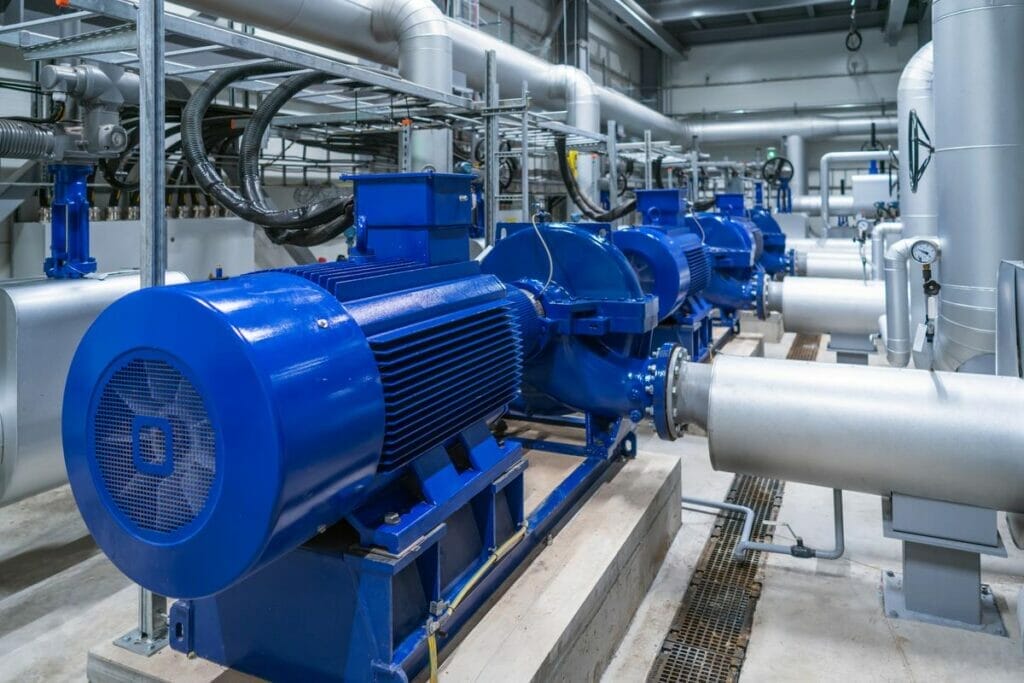Have you ever wondered what keeps a centrifugal pump running smoothly and efficiently? The seal chamber plays a crucial role in this process.
In this blog post, we’ll dive into the purpose and function of the seal chamber, exploring how it helps maintain optimal pump performance.

What is the Seal Chamber
The seal chamber is a critical component of a centrifugal pump, located adjacent to the impeller. It houses the mechanical seal or packing gland, which prevents fluid leakage from the pump casing along the shaft. The seal chamber provides a controlled environment for the sealing components, ensuring their proper functioning and longevity.
Functions of the Seal Chamber
The primary functions of the seal chamber in a centrifugal pump include:
- Housing the sealing components: The seal chamber accommodates either a mechanical seal or a packing gland, depending on the pump design. These sealing components maintain a barrier between the pumped fluid and the atmosphere, preventing leakage and maintaining pump efficiency.
- Providing a controlled environment: The seal chamber maintains a suitable environment for the sealing components by regulating pressure, temperature, and fluid dynamics. This controlled environment ensures optimal performance and extends the life of the sealing components.
- Facilitating seal lubrication and cooling: The seal chamber allows for the circulation of a lubricating and cooling fluid, such as the pumped liquid or an external flush, around the sealing components. This circulation helps dissipate heat generated by friction and keeps the sealing faces lubricated, reducing wear and tear.
- Enabling seal maintenance and replacement: The seal chamber provides access to the sealing components, allowing for periodic inspection, maintenance, and replacement when necessary. This accessibility minimizes downtime and ensures the pump’s reliability.
Components of Seal Chamber
The seal chamber of a centrifugal pump is a critical component that houses the mechanical seal or packing gland. It is located between the pump casing and the bearing housing, and serves to contain and control the fluid that lubricates and cools the seal.
Seal Chamber Housing
The seal chamber housing is typically made of the same material as the pump casing, such as cast iron, stainless steel, or other alloys. It is designed to withstand the pressure and temperature of the pumped fluid, and to provide a secure and stable platform for the mechanical seal or packing gland.
Mechanical Seal
The mechanical seal is the heart of the seal chamber, and is responsible for preventing leakage of the pumped fluid along the rotating shaft. It consists of two primary components: a stationary seal face and a rotating seal face. The stationary seal face is fixed to the seal chamber housing, while the rotating seal face is attached to the shaft sleeve or shaft.
Packing Gland
In some centrifugal pumps, a packing gland is used instead of a mechanical seal. The packing gland consists of a series of packing rings that are compressed around the shaft to create a seal. The packing rings are typically made of a soft, pliable material such as graphite or PTFE, and are lubricated by the pumped fluid.
Seal Flush and Quench Ports
The seal chamber may also include seal flush and quench ports, which are used to introduce a clean, cool fluid into the seal chamber to lubricate and cool the mechanical seal faces. The flush fluid helps to prevent the buildup of heat and debris on the seal faces, which can lead to premature wear and failure.
Seal Chamber Pressure and Temperature Monitoring
Many centrifugal pumps are equipped with pressure gauges and temperature sensors that provide real-time data on the conditions within the seal chamber, allowing operators to make adjustments as needed to maintain proper operation.
What is Pump Seal Chamber Pressure
Pump seal chamber pressure refers to the fluid pressure within the seal chamber of a centrifugal pump. The seal chamber pressure is typically maintained at a level slightly higher than the pump’s suction pressure to prevent the ingress of air or contaminants into the sealing area.
Seal Chamber Design Considerations
Seal Chamber Dimensions
The dimensions of the seal chamber must accommodate the mechanical seal and provide adequate space for seal installation and maintenance. The chamber should be large enough to allow for proper seal alignment and minimize shaft deflection, while also minimizing the volume of fluid in the chamber to reduce heat generation.
Fluid Dynamics
The seal chamber design should promote optimal fluid dynamics to ensure efficient heat dissipation and debris removal. This can be achieved through the use of flow modifiers, such as vanes or ribs, which guide the fluid flow and prevent stagnant areas within the chamber.
Materials of Construction
The seal chamber materials must be compatible with the pumped fluid and resistant to corrosion, erosion, and chemical attack. Common materials include stainless steel, duplex stainless steel, and alloy steels, depending on the application requirements.
Seal Flush Ports
Seal flush ports are essential for introducing clean, cool fluid into the seal chamber to lubricate and cool the mechanical seal faces. The location and design of these ports should ensure even distribution of the flush fluid and prevent the ingress of contaminants into the chamber.
Drainage and Venting
Proper drainage and venting of the seal chamber are necessary to prevent the accumulation of air or vapor, which can lead to seal failure. The chamber should be designed with a low point drain and a vent connection to allow for efficient removal of any trapped air or gases.
Conclusion
The seal chamber is a crucial component of a centrifugal pump that houses the mechanical seal and provides a safe environment for its operation.
To learn more about centrifugal pump components and their functions, explore our comprehensive guide on centrifugal pumps.


